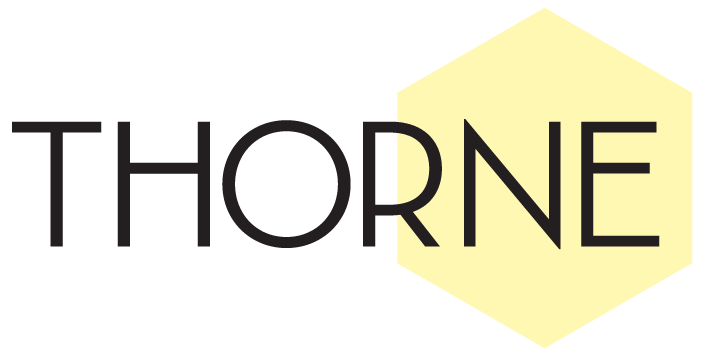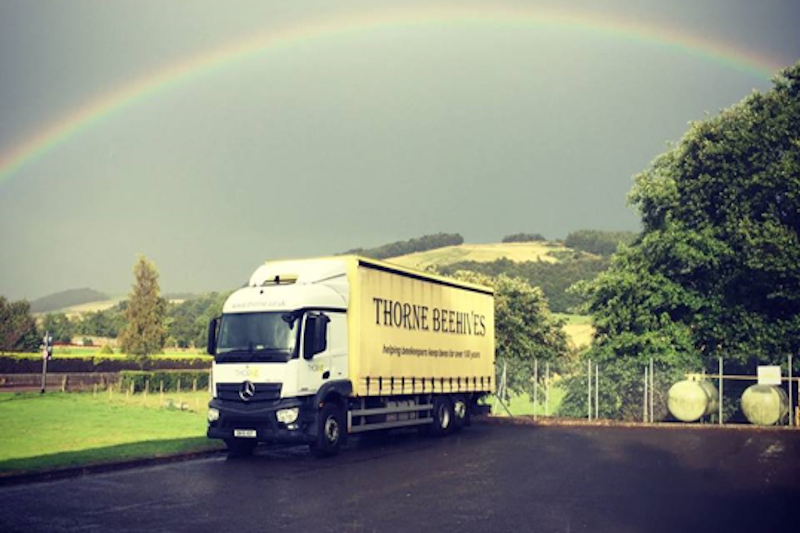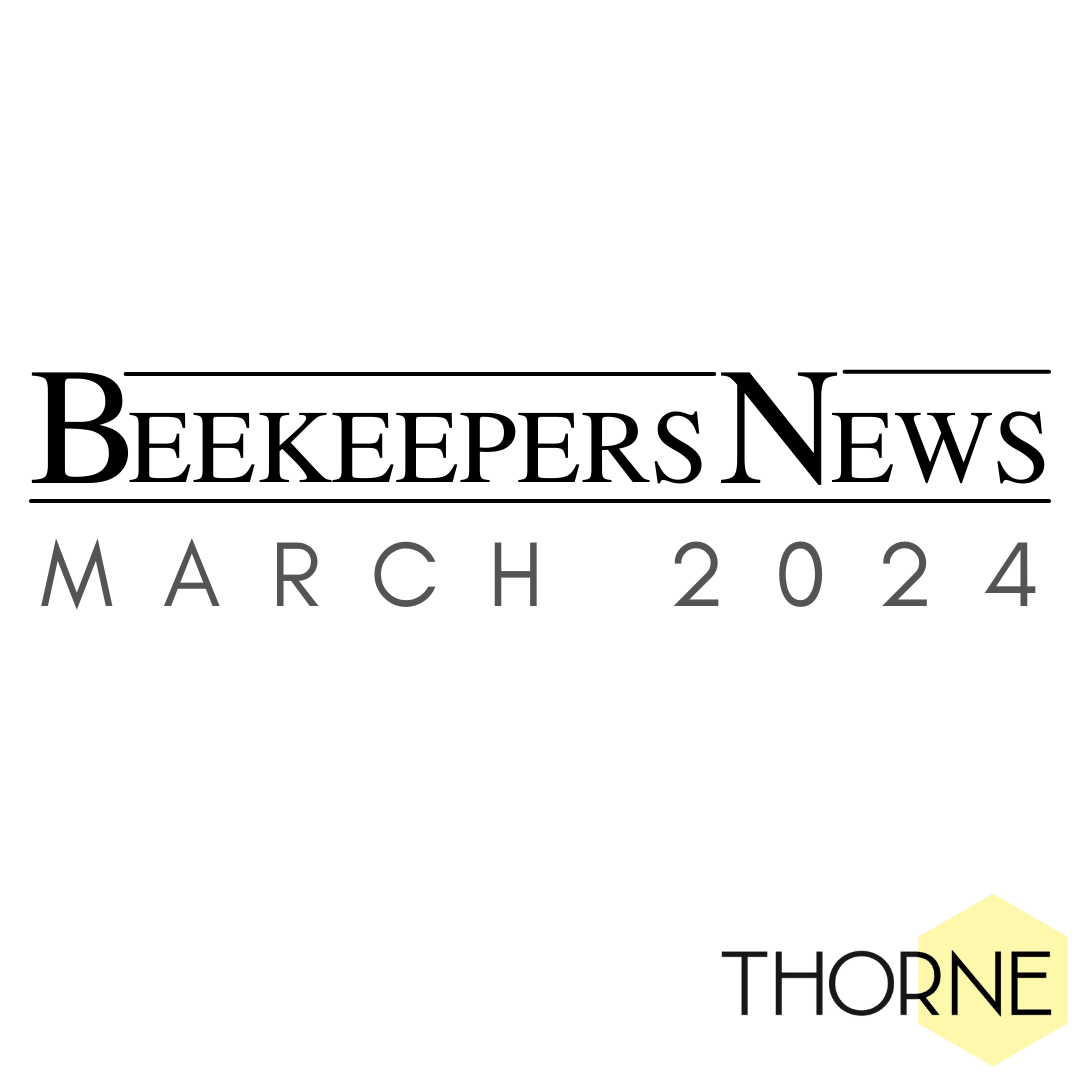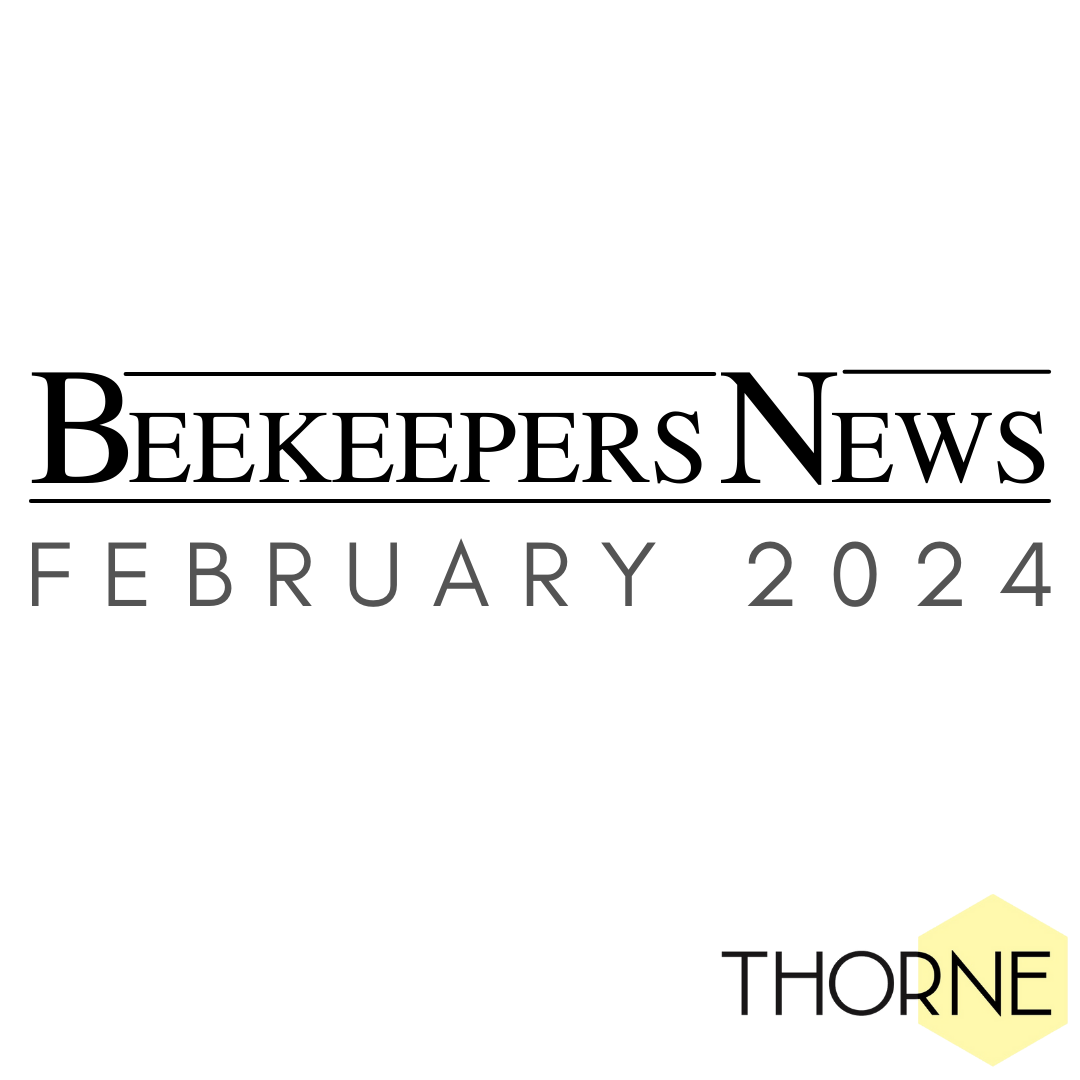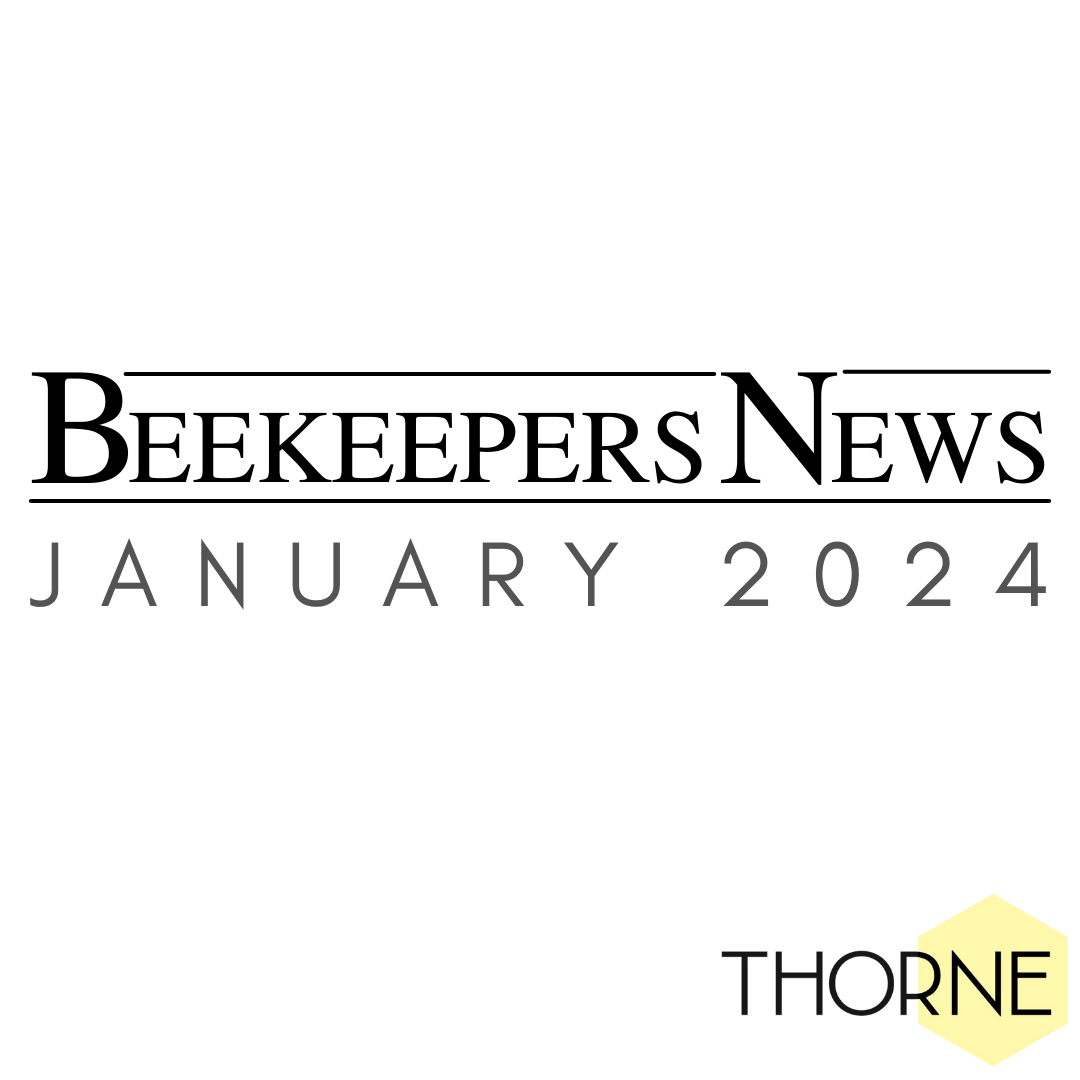August Roundup
As some companies take a summer break we seem to be as busy as ever.
Our Scottish Sale Days were an enormous success. Beekeepers from across Scotland flocked to Newburgh to bag themselves some bargains and chat with Brian and the team.
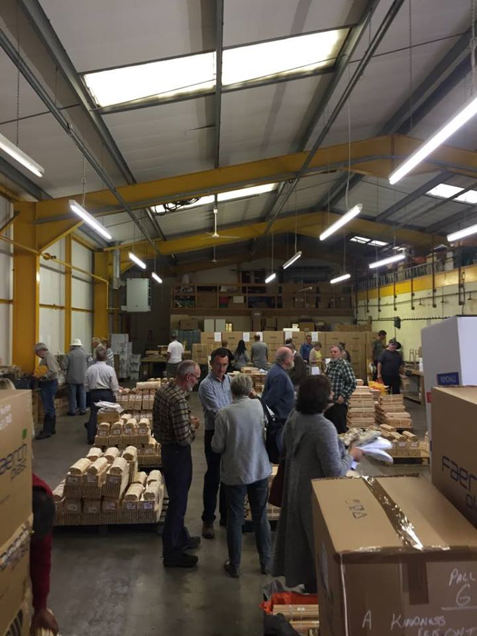
We also introduced a new Beekeeping Taster session. Eight budding local beekeepers were enthralled listening to and learning from Sasha, one of our beekeepers. Look out for more of these in the future.
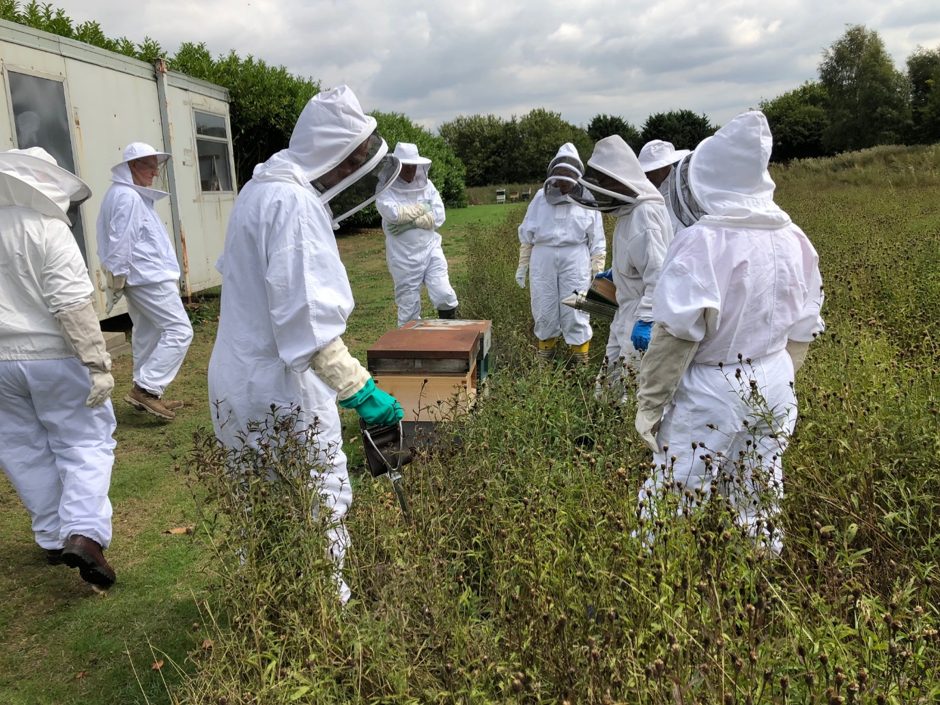
Our label printing department has never been so busy. Many are customers buying labels for the first time, a good indication that in some parts of the country at least there has been a decent honey crop. 100 personalised labels cost as little as £6.35. Or why not treat yourself to some unique labels. Simply email us the photo you would like and we do the rest. Have a look at our entire range at www.thorne.co.uk/labels
We were pleased to see the arrival of our new style of steam generator. This means the Easi-steams and steam wax extractors are now back in stock!
Next month we have three of our branch sale days, so we are busy sorting out your orders ready for collection. Order your bargains online now at www.thorne.co.uk/sale-days.
We also have our main sale day at Rand, Lincolnshire, on October 13th and of course the prestigious National Honey Show at the end of October. We have been attending the National Honey Show for over 60 years and are so proud to still be supporting, what we think, is the best beekeeping show in the world. We hope you can come along and browse the numerous trade stands, show some honey or attend a workshop. We also try to introduce new, exciting items at the show and this year will be no different!
We have recently uploaded several new Youtube videos to our channel. Take a look at
https://www.youtube.com/c/ThorneBeehives. If there are any specific videos you would like to see then please let us know!
We were very sad to learn of the death of Lester Quayle earlier last month. Lester was a stalwart of Yorkshire Beekeeper, gave advice very freely to beginners, and was a Thorne agent for many many years. We know he will be sorely missed.
We also learnt of the death of Les Chirnside, aged 95. Les was always a smiling presence at Welsh beekeeping events, the National Honey Show and our own Open Days, and was happy to volunteer his help and give advice to new beekeepers.
Equipment Focus………
The Wasp Out
This very simple and neat piece of equipment is proving to be very successful in keeping wasps at bay, especially this year with so many of them flourishing in the hot and humid conditions.
Basically, it allows the bees to exit and enter the hive at either end of the device whilst the poor old wasp is hovering around the front ventilator, picking up the scent of the hive and failing to figure out how to get in!
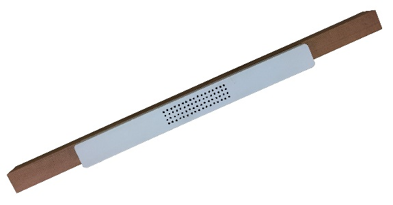
Made here at Rand on our various CNC machines, it is now available in the following sizes for floors made by ourselves:
• 405mm for National and Commercial open mesh floors - £6.99
• 413mm for budget open mesh floors - £6.99
• 419mm for solid National or Commercial floors - £6.99
• There is also a version for the WBC hive (560mm) – 11.99
The Wasp Out is secured to the slotted entrance block by double sided tape and two 8mm dowel pins that also act as mouseguards. The top easily slides off for cleaning if there are any blockages. To see a Youtube video showing how to correctly fit the Wasp Out click here.
Please be aware this is a deterring device and not 100% fool proof.
The Wasp Out was invented by a UK beekeeper a few years ago. Below is his account of how the Wasp Out came to be.
Inventors Experience
Three years ago I had three single brood, colonies on a private estate near Ampney Crucis and three on my home apiary.
Having taken all usual wasp precautions, jam jar traps and hanging traps I still lost two at the private estate and one at home.
I overheard two experienced beekeepers discussing the wasp issue and one said wasps don’t like tubes. Following this I wondered how I could create an entrance block that resembled a tube.
By the beginning of the 2015 season I had created the Wasp Out prototype but having no idea whether it would work, I showed a fellow beekeeper in Cirencester the prototype, and he made six, with my agreement, for one of his apiaries.
I made five for my own use for last season. None of the hives on either apiary were predated by wasps . What we did find was that the jam traps filled up more quickly with wasps, leaving us to believe that wasps could not find their way in to the hives and chose the traps instead.
This was repeated throughout this last season in both apiaries with the same results.
Following discussions with Thornes I adapted the wasp out using a ‘flat’ tube and have had them in use every since.
This year they have recently been placed on an 8 colony apiary on another private estate with the same results.
Ask our Expert
Why do Bees like honey?
You may have found out as you were extracting that the bees are positively queueing up to get into the room you are extracting in. I was asked why the bees prefer it to anything else. They usually only collect four things, Water, nectar, pollen and propolis, but honey trumps this list.
Nectar is mostly water with a very small percentage of sugars. Rape yields one of the highest sugar contents, hence the bees enthusiasm to collect it. They will literally fly past other nectar sources until the rape is exhausted.
To process the nectar into honey the bees add enzymes to convert the sugars into more easily consumed short chained sugars. The bees then have to reduce the water content down to below 20% before capping it.
A National super contains about 2.5lbs of honey in a frame… 10 frames ~ 25lbs. 25lbs of nectar yields about 5lbs of honey when processed… So to fill a super with 25lb of capped honey the bees need to drive off over 100lbs of water!
The reason bees descend on uncapped honey with a vengeance is because the end result “processed honey” is their preferred food. They don’t need to reduce the water content, a process requiring much energy expenditure, in the form of heat and fanning. They don’t need to break the sugars down into short chain components by adding enzymes. All the above has already been done (either by them if you are returning the “Wets” to them, or someone else if they are robbing).
Put the “Wets” back on the colony they came from (to minimize disease transfer), do it in the evening to reduce the robbing tendencies. Above a clearer board without the porters in place encourages the bees to move the honey down into the main body of the hive.
Always make sure the clearer boards make a bee tight seal around the box. Any ingress point will be found by other bees and robbers can clear a super in a day… try not to become a member of the LHC… (Lost Honey Club).
Robbing is almost impossible to stop once it gets under way. Removing the reason (i.e. the honey), turning the hose or lawn sprinkler on to suggest it’s raining, close up or reduce the entrance and put a sheet of glass in front of the entrance to confuse the robbers. All these methods work if the process is not too advanced. Best not to let is start!
Beekeeping Blog
August
This month here in Lincolnshire we have finally had some rain! The grass is starting to look a lot greener and the flowers seem to be providing some much-needed nectar for the bees. However, earlier in the month this was not the case, with the hot, dry weather drying up the nectar flowers that bees would normally forage on. For this reason, we fed the bees a syrup mixture to keep them going.
Wasps have continued to be an issue with many hovering around waiting for a chance to nip into the hives and rob their stores. As well as using entrance blocks, we have introduced Wasp-outs into the apiaries. They fit in exactly the same as entrance blocks but they also have an attachment on the front which enables bees to find their way in but leaves wasps a bit confused. This picture was taken just after inserting the Wasp-out into a hive and as you can see, the bees are a bit confused to start with, but they soon figure it out!
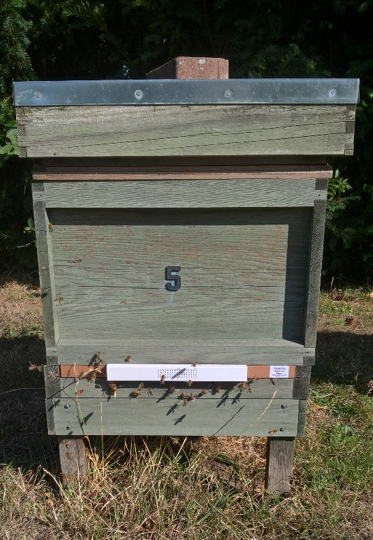
This month we have also treated for varroa with Apivar. These strips will be left in for between 6 to 10 weeks depending on the size of the brood nest. The reason for this choice is because colonies can be fed whilst treating, an advantage over other treatments at this time of year. This will give chance for the brood cycle to go round a couple of times and will hopefully result in good, strong, healthy winter bees hatching out that will be able to keep the colony going through the cold months.
Moving forward we will be keeping a close eye on stores and making sure that any weak colonies are united before they go into winter.
Bees for Development Update
In July and August Bees for Development was in Uganda with The Uganda National Apiculture Development Organisation (TUNADO), learning about beekeeping and disability. We met Simon Ojok, a partially-sighted beekeeper in Gulu who works with blind and partially-sighted beekeepers in his community. “If you cannot see well, then you must rely on your other senses: scent, sight and touch. It is possible to know when there is honey in the hive by the weight of the hive and the scent and feel of sealed honey comb - which is really smooth to touch, compared with unsealed honey. When working with people who are blind it is no good explaining that sealed honey is covered with a white capping. Instead I explain what it feels like”. TUNADO is now working with people like Simon to develop adaptive skills training materials for people with disabilities. This will make beekeeping accessible to more Ugandans, and Bees for Development will work together with TUNADO to raise support and funds for this work.
Bees for Development 25th Birthday - September Giveaway
Our Birthday Giveaway prize for September is a fabulous weekend at Humble by Nature in the Wye Valley. The prize consists of two vouchers for Courses on the working farm owned by broadcaster and writer Kate Humble. The farm is home to a thriving rural skills centre offering a wide range of Courses including smallholding; traditional rural skills and crafts; and food and cookery. All the tutors are experts in their fields, and Courses have small numbers to ensure personal attention and hands-on experience. See all the options here: www.humblebynature.com . Whether you are thinking about starting a smallholding, want to build a dry stone wall, lay a hedge, or discover delicious wild food in the hedgerow, a Course at Humble by Nature will give you the knowledge and confidence to get started.
And included with this special September prize is bed and breakfast at the fabulous Inn at Penallt www.theinnatpenallt.co.uk: a 17th Century traditional country Inn, with spectacular views of the Forest of Dean, adjoining a nature reserve, and branded by visitors as a ‘little paradise’.
Enter your details here: www.beesfordevelopment.org/giveaway/index.html
We sincerely thank Kate Humble, and Chris & Bronwyn Boston for contributing these special prizes. And of course any visit to the Wye Valley would not be complete without visiting Bees for Development here in nearby Monmouth!
Conwy Honey Fair
Please visit Conwy Honey Fair on Thursday 13th September. This Honey Fair in North Wales dates back more than 700 years to the reign of King Edward 1st, when local beekeepers were first given the right to sell honey within the walls of the North Wales town, every September 13th, from midnight to midnight, without charge. Funds raised at Conwy Honey Fair support the work of Bees for Development. More details here:
www.conwybeekeepers.org.uk/fairs-festivals/history-of-conwy-honey-fair/
National Honey Show News
The National Honey Show offers extra events to look forward to this year. Several people associated with the Show have published very interesting books, some just this year. Liz Duffin, whose workshop is scheduled for the Friday morning’s book “Making Beeswax Flowers”; Sarah Wyndham Lewis, whose workshop is scheduled for the Friday afternoon has published “Planting for Honeybees: The Grower's guide to creating a buzz”; and the second edition of Norman Chapman’s “Pollen Microscopy” will all be available from Northern Bee Books. Also, one of this year’s lecturers from the States, Clarence Collison has published “A Closer Look - Basic Honey Bee Biology”; and Michael Badger, “Heather Honey” and “Mead and Honey Wines”.
Authors will be available to chat and sign books on the Northern Bee Books stand (towards the back of the hall in “The Champagne Bar”) Friday Lunchtime 12.30pm and Saturday morning 10.30am.
This, alongside all the usual activities at this year’s National Honey Show, Thursday 25th to Saturday 27th October 2018.
The National Honey Show, 25 to 27 October 2018, Sandown Park Racecourse, Esher, KT10 9AJ www.honeyshow.co.uk.
Upcoming Events
Sale items to order for collection at the branch sale days and National Honey Show are live on our website – www.thorne.co.uk/sale-days
Windsor Sale Day Saturday 8th September
Stockbridge Sale day Saturday 15th September
Devon Sale Day Saturday 29th September
Rand Open and Sale Day Saturday 13th October
National Honey Show 25th to 27th October
Winter Sale (starts online) Midnight Friday 28th December
